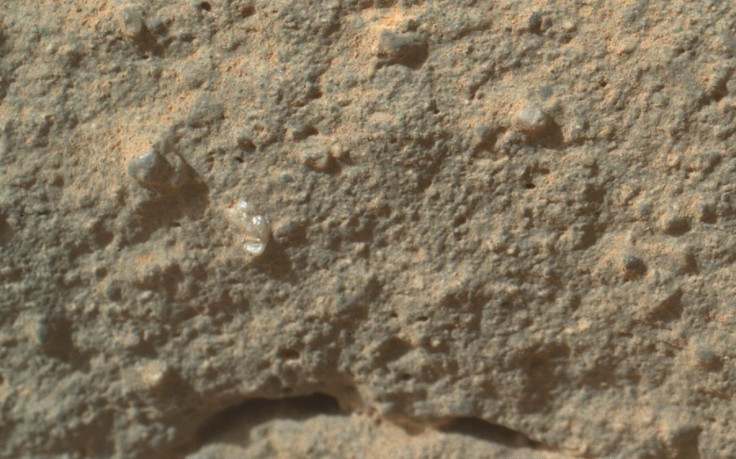NASA Mars Rover Curiosity Finds 'Flower' Rock Formation

Months after landing on the red planet, NASA’s Mars rover Curiosity is still creating buzz with its latest findings. The most recent Curiosity news to captivate the Internet is a photo of a small rock formation that closely resembles a flower.
The so-called Martian flower was photographed by the Curiosity rover’s small Mars Hand Lens Imager on Dec. 19. The small, microscopelike camera captured a tiny, transparent rock formation with flared petals that strongly resemble an Earth flower.
NASA released the images publicly a few days ago, and Curiosity fansites such as Above Top Secret quickly took notice of the Martian flower.
While Curiosity has photographed several small bits of plastic debris from the rover’s landing in the past, NASA appears to believe that this Martian flower is in fact a genuine product of the red planet, as opposed to debris from Curiosity itself.
"That appears to be part of the rock, not debris from the spacecraft,” Guy Webster, a representative of NASA’s Jet Propulsion Laboratory, told NBC News via email.
At the same time NASA released the Martian flower image, the space agency also published a large panorama of Curiosity’s current location. The depression, Yellowknife Bay, is inside the Gale Crater and is dominated by a curving line of rock that NASA scientists have dubbed Snake River.
"It's one piece of the puzzle," John Grotzinger, of the California Institute of Technology in Pasadena, said in a statement cited by Space.com. "It has a crosscutting relationship to the surrounding rock and appears to have formed after the deposition of the layer that it transects."
Curiosity has been on the surface of Mars since Aug. 6 and will continue its research mission for the next few years. Throughout this time, the rover will attempted to determine whether Mars is capable of hosting microbial life.
© Copyright IBTimes 2024. All rights reserved.






















